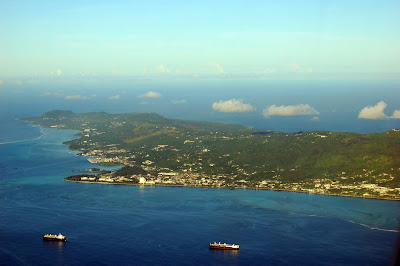Water from the Stone of CNMI Sovereignty

Next month I'll be back in Washington D.C. to resume my research about federal territorial relations that I began last year. Much of my focus last year was on Guam and its commonwealth movement, but as I conducted interviews and sifted through files, I also found more and more references to the commonwealth of the CNMI as well and found its evolution and devolution to be even more fascinating. Even just the contrast of reading about what has taken place there for the past few decades in federal documents versus local government is striking. Take for example when a number of sovereignty provisions that had been negotiated through the commonwealth were lost about ten years ago. This process was referred to the in CNMI as a "federalization," akin to a takeover by the federal government. Within the federal government however it was referred to as as normalizing of a relationship, whereby those provisions were considered to be only temporary and would eventually be done away


